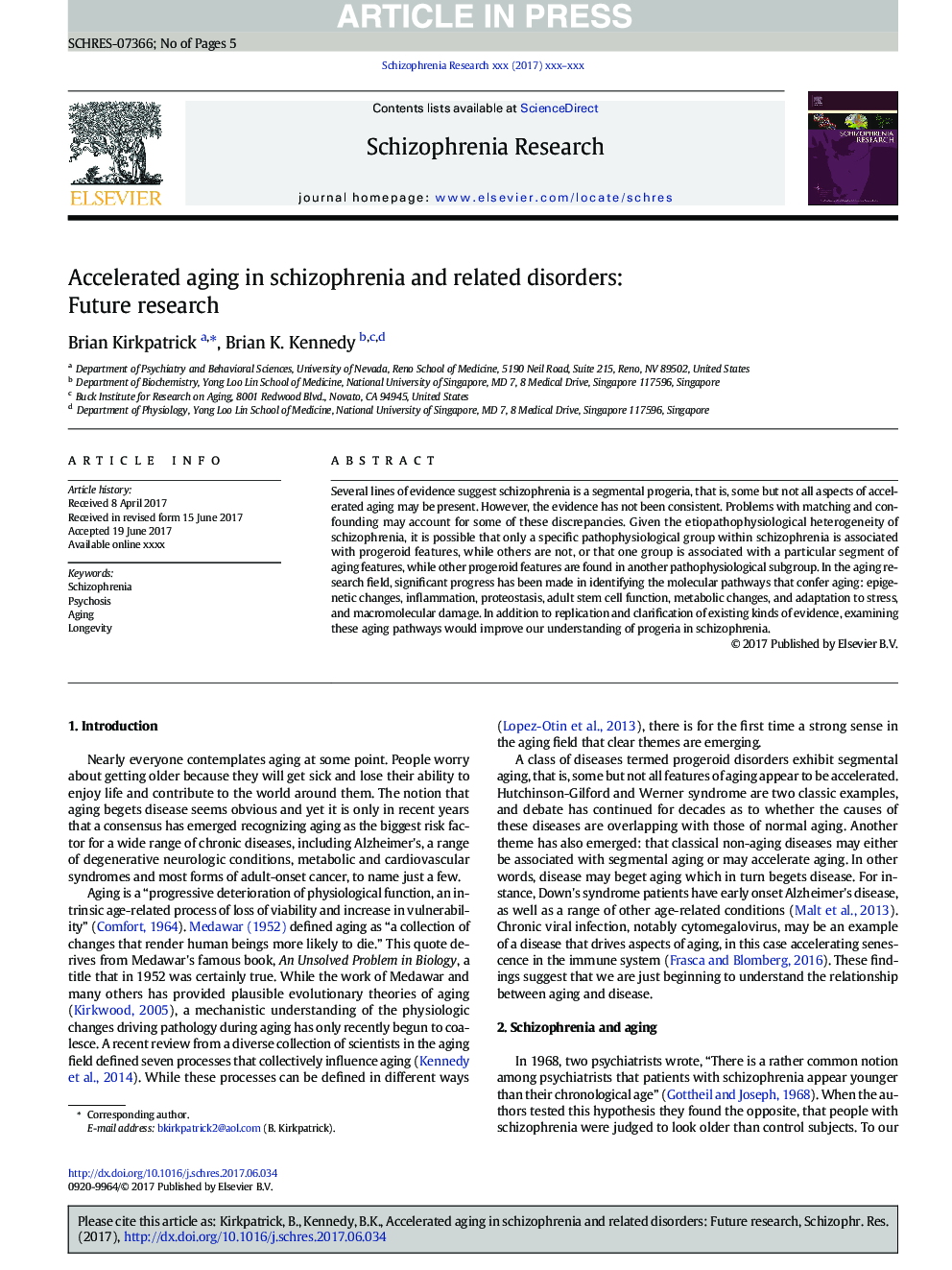| Article ID | Journal | Published Year | Pages | File Type |
|---|---|---|---|---|
| 6821092 | Schizophrenia Research | 2018 | 5 Pages |
Abstract
Several lines of evidence suggest schizophrenia is a segmental progeria, that is, some but not all aspects of accelerated aging may be present. However, the evidence has not been consistent. Problems with matching and confounding may account for some of these discrepancies. Given the etiopathophysiological heterogeneity of schizophrenia, it is possible that only a specific pathophysiological group within schizophrenia is associated with progeroid features, while others are not, or that one group is associated with a particular segment of aging features, while other progeroid features are found in another pathophysiological subgroup. In the aging research field, significant progress has been made in identifying the molecular pathways that confer aging: epigenetic changes, inflammation, proteostasis, adult stem cell function, metabolic changes, and adaptation to stress, and macromolecular damage. In addition to replication and clarification of existing kinds of evidence, examining these aging pathways would improve our understanding of progeria in schizophrenia.
Keywords
Related Topics
Life Sciences
Neuroscience
Behavioral Neuroscience
Authors
Brian Kirkpatrick, Brian K. Kennedy,
